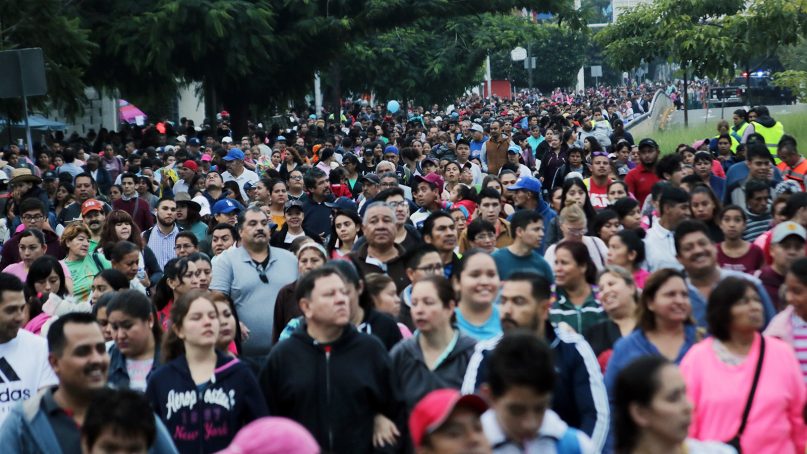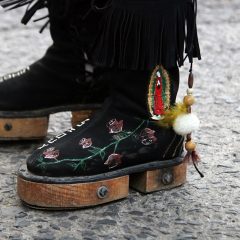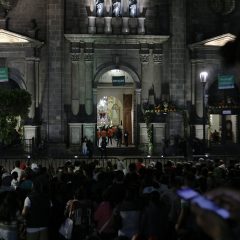GUADALAJARA, Mexico (RNS) — The Romería of the Virgin of Zapopan is one of the most important annual religious celebrations in Mexico. Up to 3 million Catholic pilgrims accompany the medieval statue of Our Lady of Expectation as it is carried five miles from the Cathedral Basilica of Guadalajara to its home in the Franciscan basilica in neighboring Zapopan.
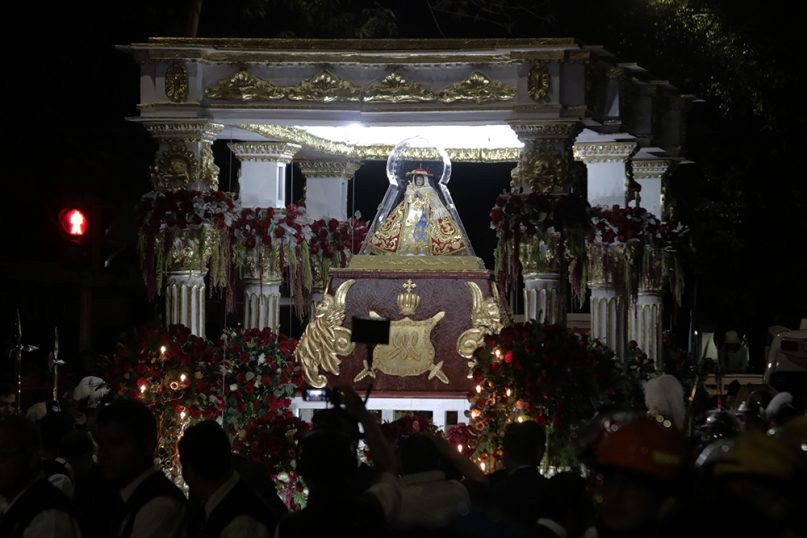
The Romería of the Virgin of Zapopan starts before dawn and travels five miles from the Guadalajara Cathedral to the Basilica of Zapopan. A romería is a short-distance, annual Roman Catholic pilgrimage. RNS photo by Ameyalli Díaz
The story goes back to 1695, when the Virgin of Zapopan is believed to have saved the inhabitants of this part of Jalisco, in western Mexico, after a series of epidemics and floods. The Virgin of Zapopan became the local patron against storms, and the romería — the Spanish term for a short pilgrimage — has continued uninterrupted for roughly 300 years.
- Thousands of faithful take photos as the Virgin of Zapopan passes, right, during the annual pilgrimage in western Mexico. RNS photo by Ameyalli Díaz
- Images of the Virgin are found everywhere during the Romería of the Virgin of Zapopan on Oct. 12, 2018, including on the shoes typically worn by dancers. RNS photo by Ameyalli Díaz
- Young pilgrims have their faces painted with the Virgin during the celebration on Oct. 12, 2018. RNS photo by Ameyalli Díaz
- Pilgrims carry statues of different Roman Catholic saints to the Basilica of Zapopan to be blessed by the Virgin on Oct. 12, 2018. RNS photo by Ameyalli Díaz
- Roman Catholic faithful come to the Guadalajara Cathedral in western Mexico at 5 a.m. for the start of the Romería of the Virgin of Zapopan on Oct. 12, 2018. RNS photo by Ameyalli Díaz
- Hospital patients wait for the Virgin of Zapopan to pass during the annual pilgrimage in western Mexico on Oct. 12, 2018. RNS photo by Ameyalli Díaz
Every Oct. 12, the Virgin of Zapopan travels protected by her Guard of Honor, escorted by the cardinal of Guadalajara, bishops, priests and seminarians, as well as thousands of dancers of all kinds, and more than a million pilgrims. The Virgin remains in Zapopan through June before returning to Guadalajara for the four months before the annual romería.
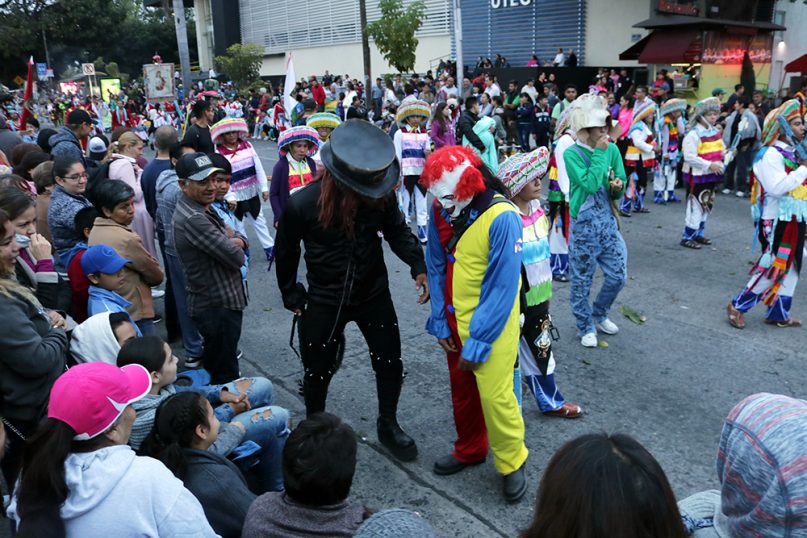
The “morenos” are beings from hell that take the form of clowns. Their function is to accompany the dance troupes, making sure that no one interrupts the dances, during the romería on Oct. 12, 2018. RNS photo by Ameyalli Díaz
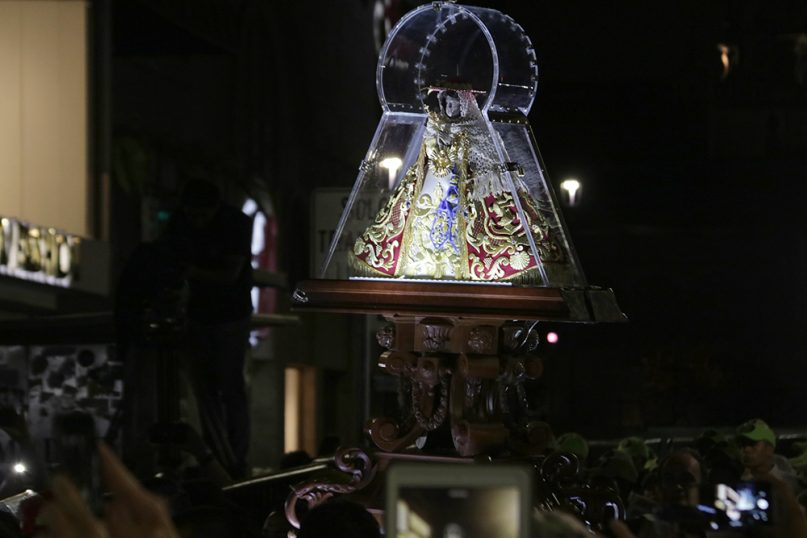
The Virgin of Zapopan statue, carried in a protected case, is decorated differently each year for the pilgrimage. The dress makers remain anonymous, but common symbols include the dolphin, the peacock, the dove and the anchor, which refers to Christ. RNS photo by Ameyalli Díaz
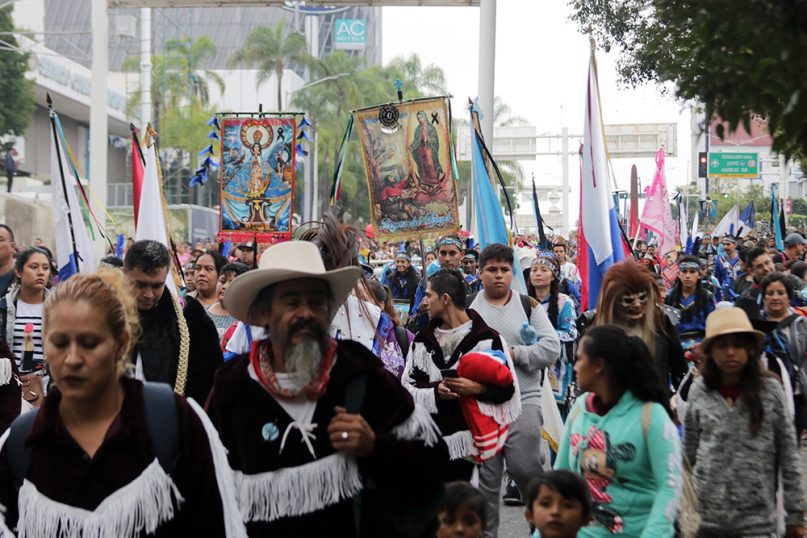
Each dance group in the procession is led by a different pennant featuring religious imagery. RNS photo by Ameyalli Díaz

A man carries a crucifix during the Romería of the Virgin of Zapopan in western Mexico on Oct. 12, 2018. RNS photo by Ameyalli Díaz
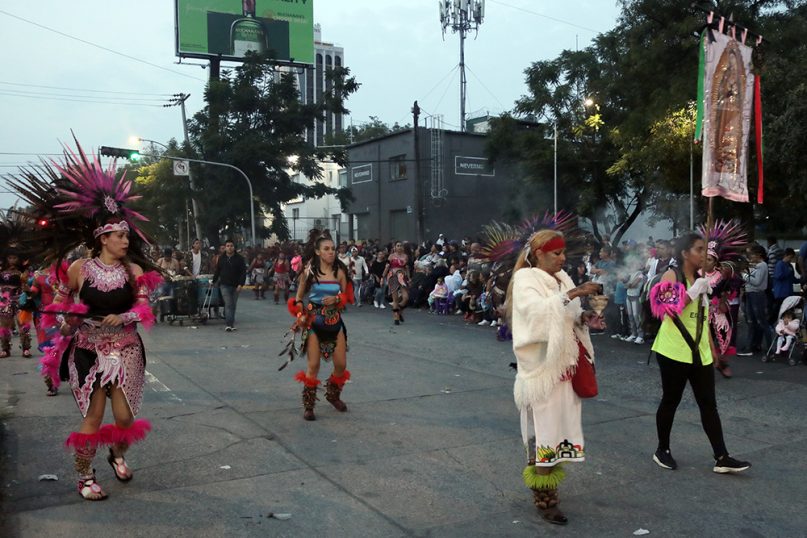
Thousands of dancers perform in adoration of the Virgin at the front of the pilgrimage on Oct. 12, 2018, in western Mexico. Each dance group is led by its own pennant, carried here by a woman on the right. RNS photo by Ameyalli Díaz
